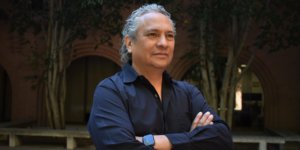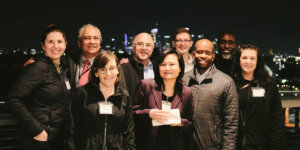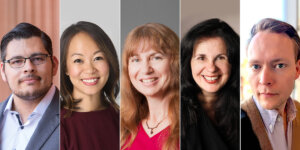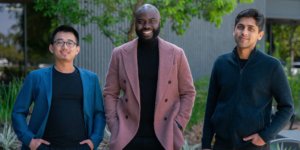
Francisco Valero-Cuevas has been selected to join a board that helps shape the direction of medical rehabilitation research. Photo: Nick Nuccio
Francisco Valero-Cuevas has been granted one of the most cherished recognitions an engineer working in biomedical research can receive: the ability to help guide the landscape of rehabilitation science for years to come.
Valero-Cuevas, a professor at the USC Viterbi School of Engineering, has been selected to join the National Advisory Board on Medical Rehabilitation Research (NABMRR). The board was created by the Director of the National Institutes of Health to advise the National Institute of Child Health and Human Development (NICHD) and the National Center for Medical Rehabilitation Research (NCMRR), with the goal of identifying topics the research community should pursue to maximize real-world impact in the field of medical rehabilitation.
The Board consists of 12 scientists who collaborate with people with disabilities, their advocates, community leaders and funding agencies. This year, only four engineers are part of this prestigious Board. “I am humbled by this opportunity to serve our research community alongside such an outstanding group of colleagues, but most importantly for the opportunity to help us advance our science and technology to best help people with disabilities,” said Valero-Cuevas.
The NICHD and the NCMRR are part of the National Institutes of Health (NIH), the most competitive source of academic funding for medical research in the country. Importantly, they take collaboration with the research community very seriously. The Board represents the highest level of interaction between the leadership of the NIH and external scientists.
“To advise the NIH directly on the best ways to support rehabilitation research is a distinct honor,” said Valero-Cuevas.
Of NABMRR’s 12 active members, Valero-Cuevas and other fellow engineers offer their unique perspective as they collaborate closely with members from the clinical and medical rehabilitation communities in areas such as neurology, neuroscience and physiology.
“Serving on this board is particularly challenging, but also very rewarding, as you learn to listen and work with people with disabilities, their advocates, and the full ecosystem of scientists working together on their behalf,” he commented.
“It goes without saying, but you need to learn to speak with and collaborate with neurologists about neurology, physical therapists about physical therapy, and pediatricians about pediatrics, etc.”
Valero-Cuevas is no stranger to interdisciplinary work. His Brain-Body Dynamics Lab focuses on problems at the interfaces of engineering, medicine and biology. Examples include: how the brain and nervous system control the body, how to leverage lessons from biology and neuroscience can help us create the next wave of Artificial Intelligence and bio-inspired robots, how stroke and Parkinson’s disease disrupt voluntary movement, and even how basketball players shoot free throws.
It is Valero-Cuevas’s interdisciplinary work that has prepared him for the wide-ranging fields he will encounter during his tenure on this prestigious Board.
His primary appointments are in Biomedical Engineering at Viterbi and in the Division of Biokinesiology and Physical Therapy on the Health Sciences Campus. He holds courtesy appointments in the departments of Aerospace and Mechanical Engineering, Computer Science, and the Ming Hsieh Department of Electrical and Computer Engineering.
“An engineer needs to understand the needs of other people,” he explained. “For example, we need to put ourselves in the place of someone with a disability to understand their needs. Also, it is important to listen to colleagues in different fields because what is a problem and a solution to an engineer may be different from what a physician sees as a problem and its solution.”
“After that, you can say: engineering can bring those solutions to life.”
Published on February 4th, 2022
Last updated on February 4th, 2022












